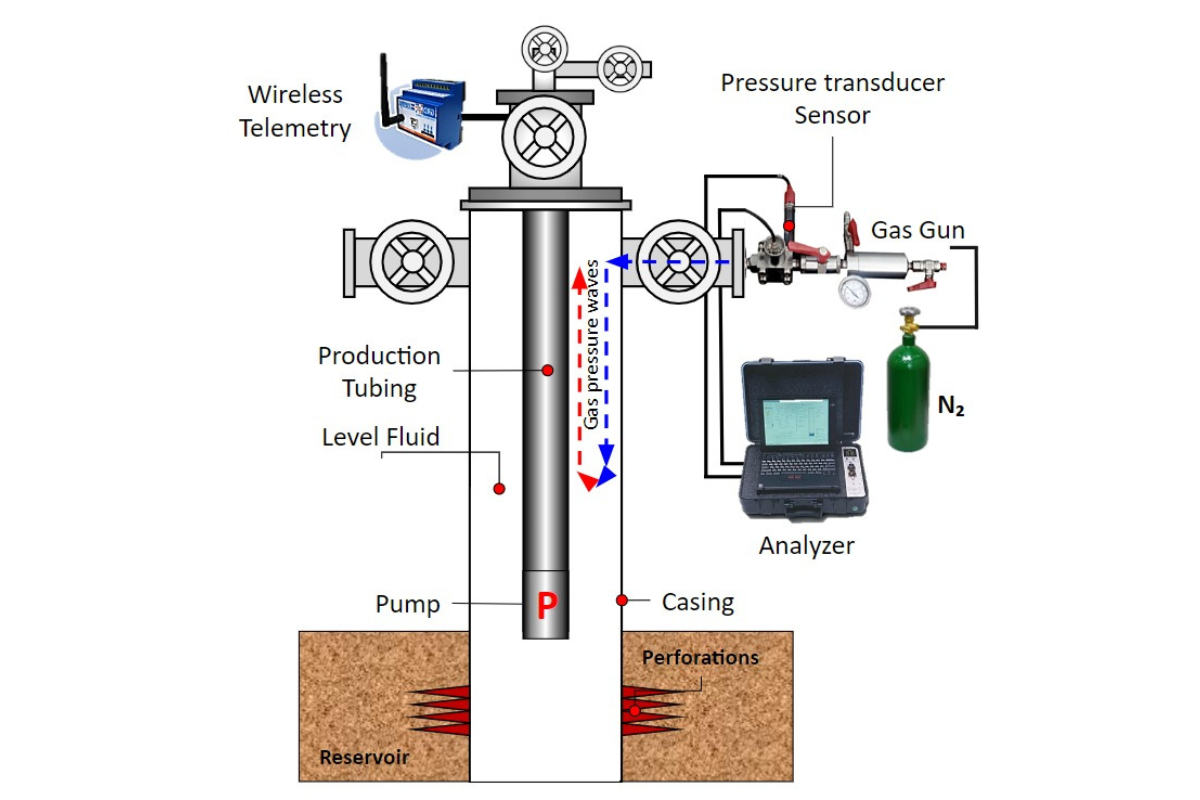
In Steam Stimulation Processes (pre and post-injection stages), it is very important to carry out continuous acquisition of the necessary information to determine the operation conditions and analyze the performance of the well. When continuous monitoring systems such as downhole sensors for pressure and temperature measurement are not available, simple acoustic registers can be applied, such as: dynamic fluid level logs to determine gas flow in the annular space, dynamic and static downhole pressures, calculation of production potential (input capacity), determination of pressure distribution in the well (surface, gas column and liquid column in the well – Dynamic gradients or pressure statics), automatic well restoration measurements, calculation of formation damage, relative permeabilities (fluids), among others. These measurements can be made before and after the steam injection; either through portable or fixed equipment in automatic mode.
Acoustic Log (Fluid Level):
The fluid level refers to the depth of gas-liquid phase in the annular space between the tubing and casing, measured from the surface. The difference between the fluid level and the depth of the pump is known as the effective submergence (liquid).
Measurement is performed through the use of an integrated system comprised by a portable computer, specialized software, a precise sigma-delta type analog to digital converter, automatic gas gun (wireless) and pressure sensors. Other accessories are used to generate automated acoustic shots in case of carry out pressure restoration tests (Build-up). The register operates under the principle of propagation and reflection of the pressure waves in gases. First, a pulse or wave with Nitrogen or CO2 is generated through the annular space or production tubing. The sound wave collide with the level and tubing joints; then it return to the surface (where there is a change in section diameter, the wave is reflected). The signal is detected by a microphone and converted to an electronic signal; then it is interpreted by the analyzer and sent to the computer in digital mode.
Using the acoustic and pressure signal from the annulus, the analyzer determines the depth of the limit between the gas and liquid phase; consequently, the volume of gas produced in the annulus and the gas present in the fluid column are determined using the pressure differential and time during the period that casing valves are closed. On the other hand, through a mathematical algorithm and based on the static pressure of the reservoir, the dynamic downhole pressure is determined, as well as other important variables to carry out a more exhaustive analysis of the well.
To download the article, click here.


